The neuropsychologist specializing in child development Carmen Virginia Miranda tells us in this article about the child neuropsychological intervention she has carried out at her center NKI Neuropsicológica with NeuronUP.
Within the field of child neuropsychological intervention, Specific Language Impairment (SLI) represents a challenge that requires specialized attention. This disorder affects children’s language development, causing difficulties in verbal comprehension and expression.
Diagnosis and assessment of SLI
The first step in addressing SLI is to carry out an accurate diagnosis. A specialist in child neuropsychology, a speech therapist and/or speech-language pathologist will conduct a thorough assessment to determine the areas of language affected and establish an individualized profile of the child.
For this purpose, standardized tests and questionnaires will be used to identify language difficulties and rule out other disorders or developmental problems.
This initial diagnostic step is essential and it is important to define at which level of language (phonological, morphological, semantic, syntactic and/or pragmatic) the difficulty is located, as well as its severity, because based on the results and specific characteristics the objectives of the intervention and the choice of activities for each session will be planned.
Objectives of neuropsychological intervention in SLI
The neuropsychological intervention in SLI has as its main objective to improve the child’s language skills and reduce the impact of the disorder on their daily life.
Some specific objectives may include promoting verbal comprehension, stimulating vocabulary, improving fluency and grammar, as well as promoting compensatory strategies to address communicative difficulties.
It is essential to adapt the objectives to each child’s individual needs, taking into account their age, level of development and the specific characteristics of the disorder.
For example, one of the specific objectives of the neuropsychological intervention in SLI could be “to promote verbal comprehension”; to achieve this various strategies can be used, such as working on identifying key words in a conversation, practicing comprehension of simple and complex instructions.
Specifically with a NeuronUP activity: “Written comprehension with questions”, it is possible to address this objective in older children.
By adapting these objectives to the child’s individual needs, a personalized intervention plan can be designed that fits their age, level of development and the specific characteristics of the disorder and thus improve the child’s verbal comprehension ability and allow more effective communication in their daily life.
Intervention strategies in SLI
There are different approaches and strategies that can be used in neuropsychological intervention for SLI. Some of them are the following:
- Speech therapy focused on phonological skills: work is done on the sounds of language to improve auditory discrimination and the correct production of sounds. For this purpose, interactive activities and word games can be used.
- Vocabulary stimulation: techniques are used to expand the child’s vocabulary through the use of images, objects and real contexts. Word association games, vocabulary cards and categorization activities are useful resources in this strategy.
- Development of verbal comprehension: exercises are used that promote understanding of instructions, identification of concepts and answering questions. Images, active listening exercises and activities for following instructions can be used.
- Improvement of verbal expression: focus on developing the child’s ability to form grammatically correct sentences, use appropriate vocabulary and express their ideas coherently. Sentence construction exercises, storytelling and guided conversations are effective resources for this purpose.
Use of NeuronUP in the neuropsychological intervention for SLI
NeuronUP, being a digital platform designed for cognitive and neuropsychological rehabilitation, offers numerous tools and resources to address SLI.
Both the interactive activities and the paper materials facilitate the intervention and motivate the child during the process.
Some of the resources available in NeuronUP for SLI include games for word association, verbal comprehension exercises and activities for grammar and sentence construction.
Examples according to the language level
1. Phonological level
- Word association game with images: the child must associate images of objects with words that have the same initial sound (Example of NeuronUP activities: Where is the little letter?; Identify sounds in image names).
- Auditory discrimination exercise: sounds are played and the child must identify whether they are the same or different.
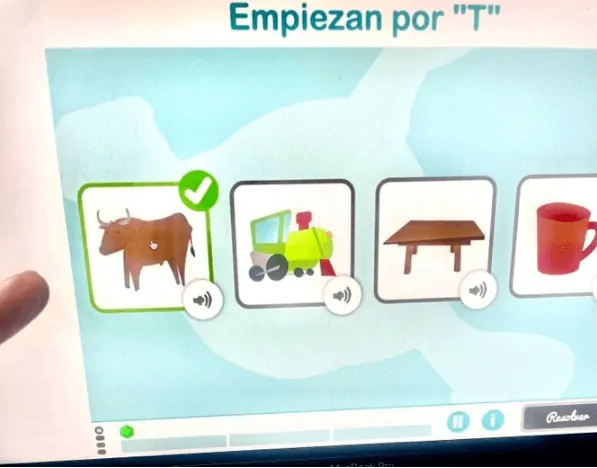
2. Semantic level
- Word categorization activity: different images are presented and the child must group them into semantic categories (Example of NeuronUP activities: Tidy Up the Mess; Connected Drawings; Common Items; Search and you will find!)
- Vocabulary exercises: for naming and identification (Example of NeuronUP activities: Match noun with image; Find a word by its definition; Correct Image Name; What’s its name?)
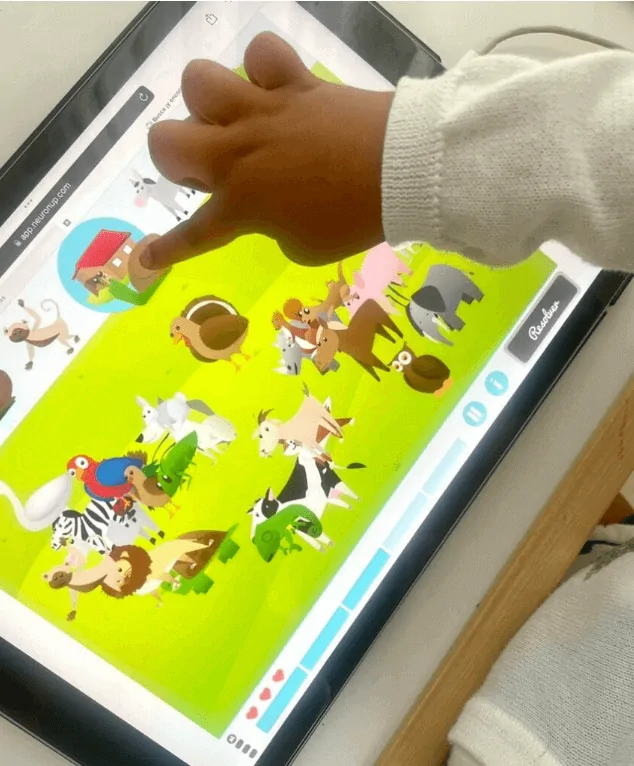
3. Morphological level
- Word formation activity: Provide a root or base word and ask the child to add suffixes or prefixes to create new words. For example, if the base word is “kind”, the child can add the suffix “-ly” to form “kindly”.
- Sentence completion activity: Present incomplete sentences and ask the child to choose the correct option to complete them. For example, “The cat ____ on the roof” (sleeps, would sleep). This will allow working on the appropriate use of morphemes in context.
- Exercise of listing words according to their morphological structure: Provide a list of words (you can use the words used in the activity Where is the little letter?) and ask the child to classify them into categories according to their morphological structure. For example, bull, little bull, bullfighter.
For all proposals at this level it is possible to rely on each of the vocabulary activities that NeuronUP offers.
4. Syntactic level
- Sentence construction exercise: an image is presented and the child must create a grammatically correct sentence to describe it (Example of NeuronUP activities: Make Up a Story with Pictures. At a more advanced level you can use the activity: Create stories from words).
- Sentence completion activity: an incomplete sentence is provided and the child must choose the correct option to complete it (Example of NeuronUP activities: Form sentences)
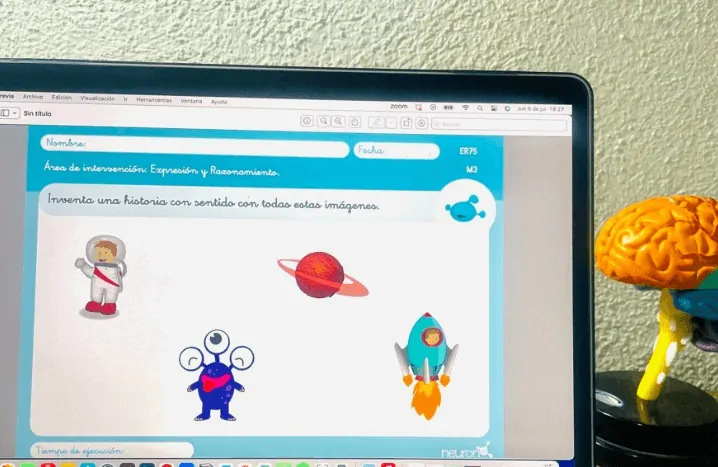
5. Pragmatic level
- Guided conversation exercise with the NeuronUP activity “What is the best thing to do?”
- Present the child with the hypothetical situation, ask them “What would you do?”
- Encourage participation in a guided conversation, using appropriate pragmatic skills such as the initial greeting, asking relevant questions, taking turns speaking and responding appropriately to the interlocutor’s answers.
- Provide support and model examples of appropriate responses, promoting empathy, active listening and perspective-taking during the conversation.
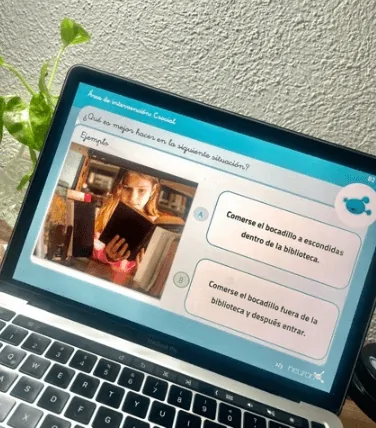
Non-literal language comprehension activity
- Present idiomatic expressions or phrases with non-literal meaning, such as “You have to put the cards on the table” or “It’s raining cats and dogs”.
- Ask the child to explain the real meaning of each expression and to use them in sentences to demonstrate their understanding.
- Provide additional examples and explanations to help them understand the figurative or non-literal sense of these expressions, and practice their use in different contexts.
For this activity, it is possible to use the NeuronUP resource “When would you show the following emotion?”. Before starting the session, review the cards and create a non-literal sentence for each card; in this way, in addition to intervening in social cognition, you will also integrate pragmatics.
Conclusion
Remember that activities must be adapted to the child’s age, level of development, communicative abilities and the results of the previously conducted assessment.
In addition, it is important to provide positive feedback and reinforcement during the process to encourage improvement in pragmatic skills. These activities will help the child understand and use language more effectively in social and communicative situations.
Neuropsychological intervention using the NeuronUP platform can be a valuable tool in addressing Specific Language Impairment. Personalizing the intervention objectives and strategies, combined with the use of graphic resources and interactive exercises, makes it possible to enhance language skills in children with SLI.
The implementation of this tool within a comprehensive rehabilitation program can make a difference in the language development and quality of life of children with SLI.
Bibliography
American Psychiatric Association – APA. (2014). Diagnostic and Statistical Manual of Mental Disorders DSM-5 (5th ed.). Madrid: Editorial Médica Panamericana.
Kidd, E., & Garcia, R. (2022). How diverse is child language acquisition research?. First Language, 42(6), 703-735.
Tellez, M. G. Y. (2016). Neuropsychology of neurodevelopmental disorders: diagnosis, assessment and intervention. Editorial El Manual Moderno.
Zelazo, P. D. (2023). Language, levels of consciousness, and the development of intentional action. In Developing theories of intention (pp. 95-118). Psychology Press.
If you enjoyed this article about educational inclusion and how to work on it with NeuronUP, you might also be interested in the following articles:
“This article has been translated. Link to the original article in Spanish:”
Intervención neuropsicológica con NeuronUP para el trastorno específico del lenguaje



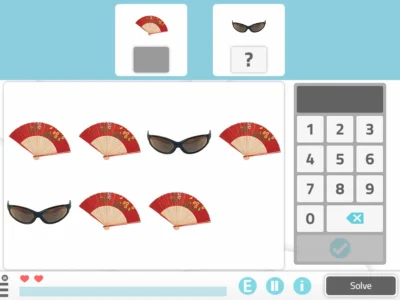

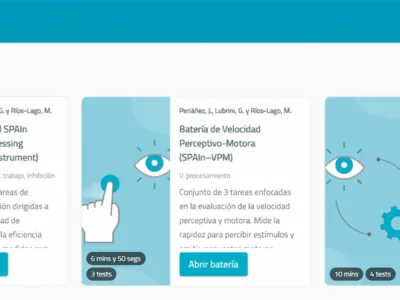
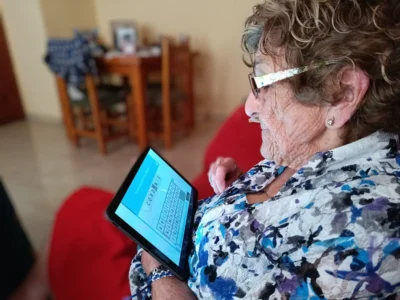
 Worksheet to Work on Processing Speed in Adults: In or out
Worksheet to Work on Processing Speed in Adults: In or out
Leave a Reply